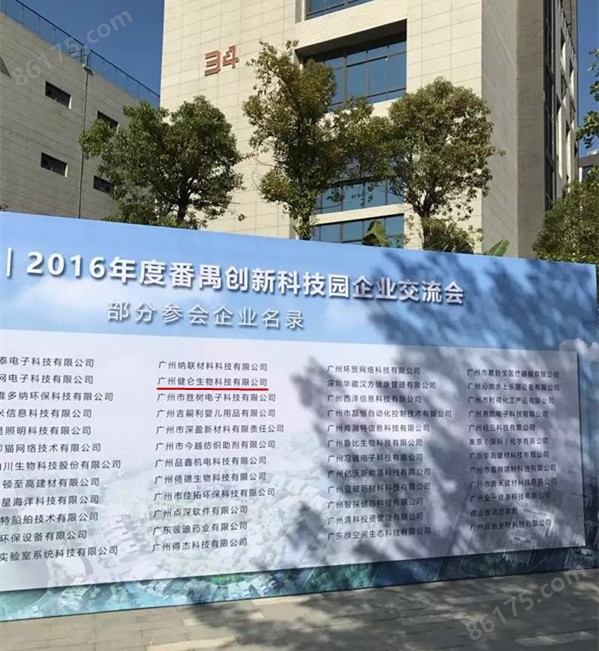其他品牌 品牌
代理商厂商性质
广州市所在地
粪便检测贾第虫病毒试剂盒
广州健仑生物科技有限公司
Cellabs公司是一个的生物技术公司,总部位于澳大利亚悉尼。专门研发与生产针对热带传染性疾病的免疫诊断试剂盒。其产品40多个国家和地区。1998年,Cellabs收购TropBio公司,进一步巩固其在研制热带传染病、寄生虫诊断试剂方面的位置。
粪便检测贾第虫病毒试剂盒
该公司的Crypto/Giardia Cel IFA是国标*推荐的两虫检测IFA染色试剂、Crypto Cel Antibody Reagent是UK DWI水质安全评估检测的*抗体。
【Cellabs公司中国总代理】
Cellabs公司中国代理商广州健仑生物科技有限公司自2014年就开始与Cellabs公司携手达成战略合作伙伴,热烈庆祝广州健仑生物科技有限公司成为Cellabs公司中国总代理商。
我司为悉尼Cellabs公司在华代理商,负责Cellabs产品在中国的销售及售后服务工作,详情可以我司公司人员。
主要产品包括:隐孢子虫诊断试剂,贾第虫诊断试剂,疟疾诊断试剂,衣原体检测试剂,丝虫诊断试剂,锥虫诊断试剂等。
广州健仑生物科技有限公司与cellabs达成代理协议,欢迎广大用户咨询订购。
我司还提供其它进口或国产试剂盒:登革热、疟疾、流感、A链球菌、合胞病毒、腮病毒、乙脑、寨卡、黄热病、基孔肯雅热、克锥虫病、违禁品滥用、肺炎球菌、军团菌、化妆品检测、食品安全检测等试剂盒以及日本生研细菌分型诊断血清、德国SiFin诊断血清、丹麦SSI诊断血清等产品。
欢迎咨询
欢迎咨询2042552662
【Cellabs公司产品介绍】
公司的主要产品有:隐孢子虫诊断试剂,贾第虫诊断试剂,疟疾诊断试剂,衣原体检测试剂,丝虫诊断试剂,锥虫诊断试剂等。Cellabs 的疟疾ELISA试剂盒成为临床上的一个重要的诊断工具盒科研上的重要鉴定工具。其疟疾抗原HRP-2 ELISA检测试剂盒和疟疾抗体ELISA检测试剂盒已经成为医学研究所的*试剂盒。Cellabs产品主要包括以下几种方法学:直接(DFA)和间接(IFA)免疫荧光法,酶联免疫吸附试验(ELISA),和胶体金快速测试。所有产品都是按照GMP、CE标志按照ISO13485。
二维码扫一扫
【公司名称】 广州健仑生物科技有限公司
【】 杨永汉
【】
【腾讯 】 2042552662
【公司地址】 广州清华科技园创新基地番禺石楼镇创启路63号二期2幢101-3室
【企业文化】



小肠是消化管中zui长的部份,小肠是主要的吸收器官,小肠绒毛是吸收营养物质的主要部位。小肠很细长,盘曲在腹腔内。小肠全长4~6米,小肠粘膜形成许多环形皱褶和大量绒毛突入肠腔,每条绒毛的表面是一层柱状上皮细胞,柱状上皮细胞顶端的细胞膜又形成许多细小的突起,称微绒毛。小肠黏膜上的环形皱襞、小肠绒毛和每个小肠绒毛细胞游离面上的1000~3000根微绒毛,使小肠粘膜的表面积增加600倍,达到200平方米左右。小肠绒毛上皮细胞朝向肠腔的一侧,估计一个成年人小肠的内表面积为200平方米。内表面积越大,吸收越多。另外,小肠绒毛内有毛细血管,小肠绒毛壁和毛细血管壁很薄,都只有一层上皮细胞构成,这些结构特点使营养物质很容易被吸收而进入血液。小肠的巨大吸收面积有利于提高吸收效率。绒毛内部有毛细血管网、毛细淋巴管、平滑肌纤维和神经网等组织(图8-8)。平滑肌纤维的舒张和收缩可使绒毛作伸缩运动和摆动,绒毛的运动可加速血液和淋巴的流动,有助于吸收。小肠内的营养物质和水通过肠粘膜上皮细胞,zui后进入血液和淋巴的过程中,必须通过肠上皮细胞的腔面膜和底膜(或侧膜)。物质通过这些膜的机制,即吸收机制,包括简自由扩散、协助扩散、主动运输、胞吐和胞吞等。小肠壁有肠腺,分泌肠液进入小肠腔内。胰腺分泌的胰液,肝脏分泌的胆汁,也通过导管进入肠腔内。这些消化液使食糜变成乳状,再经消化液中各种酶的作用,使食物中的淀粉zui终分解为葡萄糖,蛋白质zui终分解为氨基酸,脂肪zui终分解为甘油和脂肪酸。食物残渣、部分水分和无机盐等借助小肠的蠕动被推入大肠。在大肠中,不能消化的食物残渣如纤维素等与水混合成粪便,经由肛门排出体外。其余的各种营养成分都被小肠绒毛内的毛细血管吸收,直接进入血液。受盛,即接受,以器盛物之意。化物,即变化•化生之意。小肠的受盛化物表现以下两方面:一是指小肠接受由胃腑下传的初步消化的食物,起了容器的作用,即受盛;二是胃初步消化的食物,在小肠必须停留一定时间,由小肠对其进行进一步消化,将饮食水谷精微化为精微和糟粕,即化物作用。
The small intestine is the longest part of the digestive tract, the small intestine is the main absorption organ, and the small intestine villi is the main site for nutrient absorption. The small intestine is very slender and coils in the abdominal cavity. The small intestine is 4-6 meters in length. Many small folds form in the small intestine mucosa and a large number of villi protrude into the lumen of the intestine. The surface of each villi is a layer of columnar epithelial cells. The cell membrane at the tip of the columnar epithelium forms many tiny protrusions, called microvilli. . Ring-shaped folds on the small intestine mucosa, small intestine villi, and 1000 to 3,000 microvilli on the free surface of each small intestine villus cell increase the surface area of the intestinal mucosa by 600-fold to about 200 square meters. On the side of the intestinal villus epithelium toward the intestine, it is estimated that the inner surface area of an adult small intestine is 200 square meters. The larger the inner surface area, the more absorption. In addition, there are capillaries in the villus of the small intestine, the walls of the small intestine's villus and the walls of the capillaries are very thin, and they are composed of only one epithelial cell. These structural features make nutrients easily absorbed into the bloodstream. The large absorption area of the small intestine facilitates improved absorption efficiency. Inside the villi, there are capillary network, lymphatic capillaries, smooth muscle fibers, and neural networks (Figure 8-8). The relaxation and contraction of smooth muscle fibers can make the hairs stretch and sway, and the movement of the hairs can accelerate the flow of blood and lymph, which helps to absorb. The nutrients and water in the small intestine must pass through the luminal and basement membranes (or lateral membranes) of the intestinal epithelial cells through the intestinal epithelial cells and finally into the blood and lymph. The mechanisms by which these substances pass through these membranes, namely absorption mechanisms, include simple free diffusion, assisted diffusion, active transport, exocytosis, and endocytosis. The intestinal wall has intestinal glands that secrete intestinal fluid into the lumen of the small intestine. Pancreatic juice secreted by the pancreas and bile secreted by the liver also enter the intestinal lumen through the catheter. These digestive juices make the chyme become milky, and then through the action of various enzymes in the digestive juice, the starch in the food finally decomposes into glucose, the protein finally decomposes into amino acids, and fat finally decomposes into glycerin and fatty acids. Food residue, part of the water and inorganic salts are pushed into the large intestine by the peristalsis of the small intestine. In the large intestine, indigestible food residues such as cellulose are mixed with water and excreted through the anus. The rest of the nutrients are absorbed by the capillaries in the small intestine and enter the blood directly. By Sheng, that is accepted, with the meaning of the device Sheng. Substance, that is, the meaning of change and metaplasia.
The small intestine is protected by the following two aspects: First, the small intestine receives the initial digestion of food from the stomach and down the stomach, and acts as a container, that is, Sheng; Second, the initial digestion of food, in the small intestine must stay a certain time It is further digested by the small intestine, and the dietary water grains are refined into subtle and dross, that is, the compound.